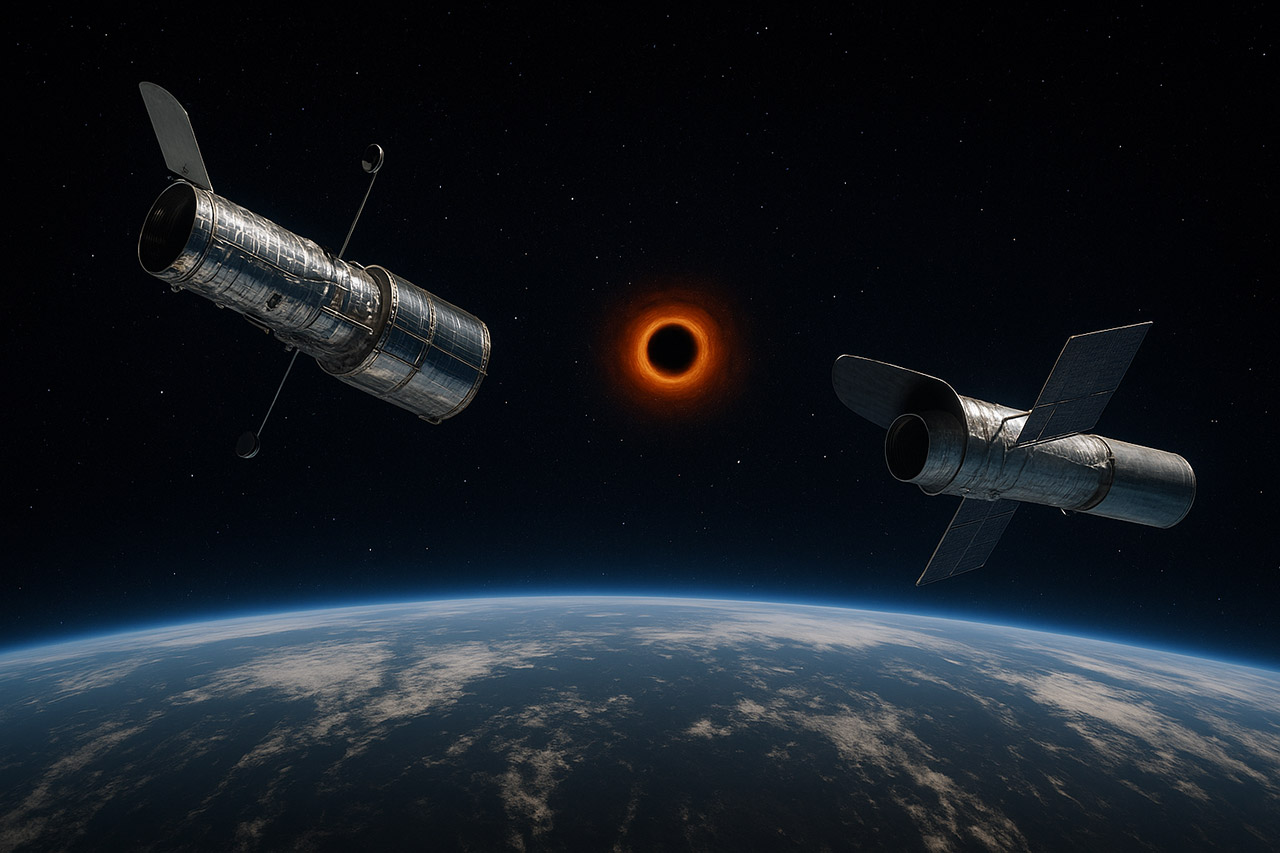
Hubble and Chandra Catch a Rare Intermediate Black Hole in Action Devouring a Star
How did your country report this? Share your view in the comments.
Diverging Reports Breakdown
Hubble and Chandra Catch a Rare Intermediate Black Hole in Action Devouring a Star
NASA’s Hubble Space Telescope and Chandra X-ray Observatory have found NGC 6099 HLX-1, a cosmic enigma in the constellation Hercules, 450 million light-years away. Intermediate-mass black holes (IMBHs) are hundreds to 100,000 suns and hard to find, only showing themselves when they disrupt a star in a tidal event. IMBH may be the building blocks, merging during galaxy collisions to form larger ones. In galaxies like N GC 6099, IMBhs orbit the periphery while the supermassive core rules, suggesting growth through mergers. The truth is likely a combination of both, and NGC6099 HLx-1 is the key.
In the vastness of space, there’s a rare cosmic oddity: an intermediate-mass black hole. NASA’s Hubble Space Telescope and Chandra X-ray Observatory have found NGC 6099 HLX-1, a cosmic enigma in the constellation Hercules, 450 million light-years away, devouring a star.
Supermassive black holes, weighing millions or billions of suns, sit at the centers of galaxies while smaller ones, under 100 suns, are formed from collapsed stars. Intermediate-mass black holes (IMBHs) are hundreds to 100,000 suns and hard to find, only showing themselves when they disrupt a star in a tidal event. NGC 6099 HLX-1 showed itself through such chaos, giving us a rare glimpse into its nature.
LEGO Icons NASA Space Shuttle Discovery 10283 Model Building Set – Spaceship Collection with Hubble… LEGO NASA Space Set – This adult LEGO set features the Space Shuttle Discovery and the Hubble Space Telescope from NASA’s 1990 STS-31 mission,…
Solar System Exploration – Unlock the mysteries of our solar system with this engaging 2,354-piece project, packed with authentic details and…
Shuttle Features Galore – The space shuttle model has an opening payload bay, retractable landing gear, opening cockpit, moving elevons, space arm,…
In 2009 Chandra detected a bright X-ray glow 40,000 light-years from NGC 6099’s silent central supermassive black hole, pinpointing a compact star cluster where stars are just light-months apart—500 billion miles in cosmic terms. XMM-Newton confirmed the X-ray source was 3 million degrees, a star being torn apart. Hubble’s follow-up optical images showed the star cluster around the black hole, a stellar buffet waiting to be devoured.When a star gets too close to an intermediate-mass black hole (IMBH), gravity stretches it into a gas stream, creating a disk that emits X-rays as it spirals in. For NGC 6099 HLX-1, this cosmic feast peaked in 2012, with X-rays 100 times brighter than in 2009, and by 2023 had dimmed. Questions remain: was it one star or a flickering gas disk? Astronomers, led by Yi-Chi Chang of National Tsing Hua University in Taiwan, are figuring it out, watching for new X-ray flares.This answers one question but raises another: how do supermassive black holes get so big? IMBHs may be the building blocks, merging during galaxy collisions to form larger ones. In galaxies like NGC 6099, IMBHs orbit the periphery while the supermassive core rules, suggesting growth through mergers. But NASA’s James Webb Space Telescope has seen ancient black holes too massive for their young galaxies, so some must form directly from collapsing gas clouds, bypassing the IMBH stage. The truth is likely a combination of both, and NGC 6099 HLX-1 is the key.
Source: https://www.techeblog.com/hubble-chandra-intermediate-black-hole-imbh/
